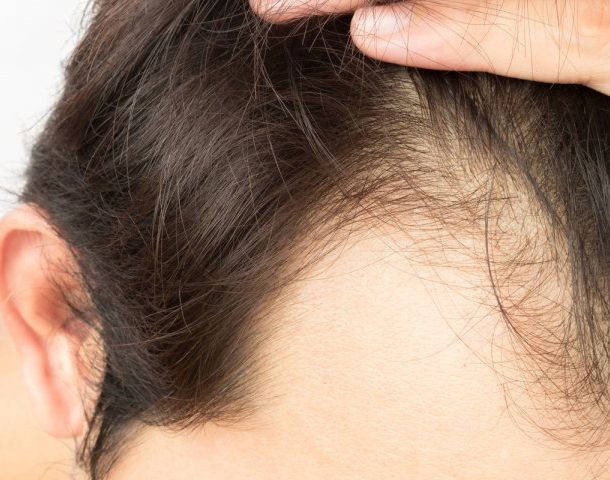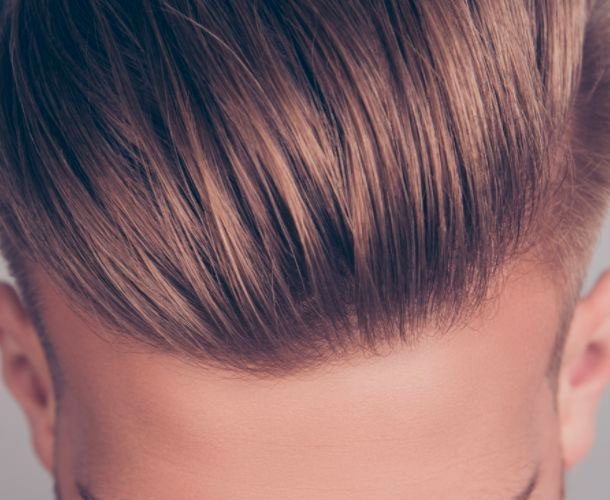News

Robotic Hair Transplant: A Guide
Share this articleSee our guide to what is being hailed as a significant advance in hair transplantation, available almost exclusively, at Dr Nyla’s.
A Robotic hair transplant represents a real advance in Follicular Unit Extraction (FUE) hair transplantation.
And it has now emerged as the successor to hair transplants carried out entirely by a surgeon.
Only a handful of clinics are able to offer this service, but there are clear, proven benefits to a hair transplant that uses robotic technology rather than relying on the skill – and patience – of a human.
Here, we outline precisely what is a robotic hair transplant, what it entails and why robotic hair restoration is now seen as the best version of this cosmetic surgery to help you.
The Benefits of Hair Transplants
Regardless of the technology used – robotic or otherwise – hair transplants address hair loss, whether this has been caused by hormonal changes, illness, stress, ageing or other reason.
The transplant sees hair follicles inserted which, over time, grow into new hair that should blend in with the rest of the hair on someone’s head.
There is, of course, a physical benefit, the change to appearance that this procedure can provide. Rather than a notable bad spot, or thinning hair, or heavily receding hair line, the client can have a full, healthy hairline and head of hair once more.
Other benefits are psychological. The loss or thinning of hair can lead to lower self-esteem and impact confidence – hair can be a key part of anyone’s appearance so hair loss can be a near-constant cause of stress.
The benefit and impact will, therefore, vary by individual. Someone who has hair loss but is unaffected by this, it simply doesn’t bother them, would perhaps gain less from a procedure than someone who has seen their confidence affected.
Even for those who have not seen their self-esteem damaged, there can still be benefits – the hair transplant leading to an overall improved image that can reap benefits at work and beyond.
Every form of hair transplant aims to deliver the same benefits – but not all are as effective.
Non Robotic Forms of Hair Transplant
The more traditional forms of hair transplant rely heavily on the surgeon – their skill, patience and ability to repeat a manual task for hours on end.
An example would be using the NeoGraft machine and FUE technologies – this uses air pressure and suction to remove hair follicles. This process is carried out entirely by the surgeon’s hand and so there is great room for human error across a task that takes many hours.
The surgeon has to ensure that harvesting happens a natural distance apart and that hair follicles do not get transected.
The patient is also paying for hours of surgeon time, as opposed to paying an automated machine to carry out much of the time-consuming process.
Most clinics do not offer robotic hair treatment and a common argument they use is that human experience is better than using a machine.
This is debatable with regard to hair transplants. Human skill and experience are of course vital in many fields, but humans are not always so adept at performing the same repeated task over many hours.
The task in harvesting follicles is to select them at a suitable distance, to remove each one in the same manner. The customised hairline has to be designed ensuring the perfect distribution of hair follicles. Both these tasks lend themselves better to robotic precision and a machine’s indefatigable nature. It never gets tired, it never makes a mistake.
The Robotic Hair Transplant Procedure
The ARTAS IX is the leading robotic hair transplant technology: it perfectly performs the precise motions that are required in a hair transplant.
However, before detailing the procedure itself it is worth noting that the first step is a detailed consultation. This is the opportunity to discuss your requirements and concerns and for the surgeon to ascertain the achievable results. You would be asked about your hair loss patterns, medical history, family history and more.
At this stage, assuming there is a desire to further explore a transplant for hair loss, the ARTAS procedure would be explained in depth, and also how this differs from a more traditional approach for tackling hair loss.
The ARTAS Hair Studio then creates a customised 3D model that shows how your hair would look once results had settled in – this may be to have resolved pattern baldness, thinning hair or other concern.
The simulation is also detailed, this is the expected results, not a guesstimate. The modelling includes the number of grafts required and also the optimal hairline design to meet a patient’s requirements.
The next stage is to identify and harvest the best follicles – this achieved through a high definition stereoscopic vision system that utilises ARTAS’ Artificial IntelligenceTM algorithms.
Hair is harvested with robotic precision, the optimal amount but also preserving the natural look of the donor area. A robot machine’s precision here being better than human intuition.
The custom hairline designed, using the ARTAS Robotic System’s Recipient Site Making technology, has the perfect distribution for harvested hair follicles; this without damaging existing hair in the region.
The harvested hair then has to be transplanted into the thinning or bald areas – this a process that takes between five and eight hours typically. This is a lengthy period of time, but the clinic will ensure your comfort and make it a pleasant experience.
Results
Results are not instantaneous. Initial results can be visible inside two months, with thicker, permanent and more luscious hair starting to grow six to nine months later. Final results will of course vary depending on age, medical history and more, but will be in line with the predicted results discussed during consultation and predicted by ARTAS.
You can watch a video explaining the procedure below:
Common Queries Relating to Robotic Hair Transplants
Prospective patients naturally have many questions relating to robotic hair transplants and the ARTAS system.
We answer some in this section, if your query is not covered please do contact us for a conversation.
Is there Scarring?
One query we are often asked relates to scarring. Scarring can be quite common with hair transplants, so is this still an issue with robot-assisted treatments?
The scarring is actually less apparent, this because the technology is less invasive than relying solely on a surgeon-operated option. For those who want a short hair style, this is of particular benefit – the scarring of traditional hair transplants, which tends to appear in a linear fashion, can be obvious when the hair is worn in a buzz cut, side parting, crew cut or other short style. An ARTAS robotic hair transplant leaves the recipient able to enjoy any hairstyle of their choosing.
Will Results Last?
Patients also ask if the results are long lasting. As with other hair transplants, the results are permanent – they are not susceptible to issues such as male pattern baldness. The new hair is here to stay.
Is it Painful?
Pain and discomfort are also topics people ask about. There can be mild discomfort, but the application of a mild, local anaesthetic helps to ensure patient comfort. There can also be some swelling of the head; this will dissipate inside one to three days. The robotic hair transplant uses a more precise procedure for grafting that is minimally invasive – as such any discomfort is likely to be reduced compared to a manual procedure.
Recovery Time from Robotic Hair Transplants
Recovery, to answer another query, is quick too. There are no surgical incisions and so no stitches are required.
The patient can typically return to daily activities two days after treatment. There is, of course, an aftercare procedure to be followed – for instance how to initially care for and wash your new hair growth. The first wash would be in lukewarm water, hair dryers should not be used for at least two weeks.
In truth, the requirements are simply common sense and are not difficult to follow.
Where Can I Get A Robotic Hair Transplant?
ARTAS iX is a robotic hair transplant procedure offered by just three clinics globally at the time of writing – Dr Nyla’s clinic in the UK one of those three.
Only the very highest level of clinics are considered by ARTAS, Dr Nyla’s clinic won Top Cosmetic Clinic Award in the UK for 2019. ARTAS hair transplants are available now to her customers in Manchester, Chehire and through the UK.
Her testimonials are universally positive and her reviews on the independent TrustPilot site outstanding.
If you would like to arrange a consultation, or simply want further advice please contact us today. Call us on 01625 523 307 or use the Contact Form.


